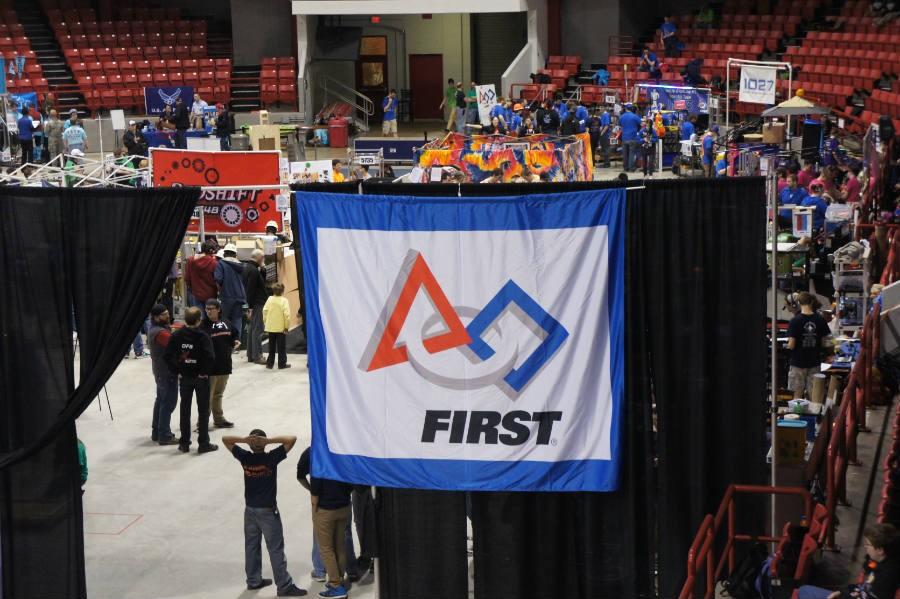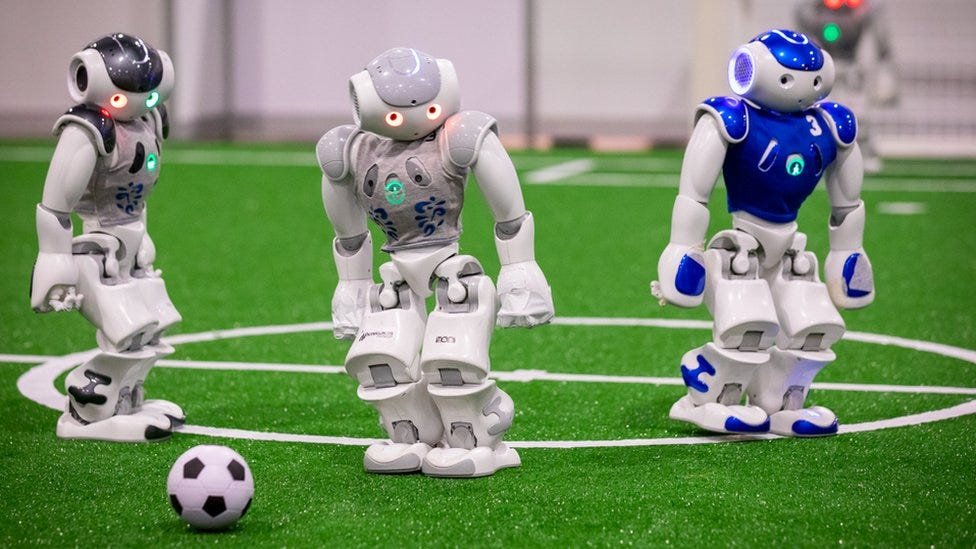Is robotics a sport? Many people ask this question today.
The answer is not simple. Robotics involves competition, strategy, and teamwork, much like traditional sports. But is it the same? Robotics competitions have grown in popularity. Students design, build, and program robots to complete tasks. These events require skill, creativity, and collaboration.
Teams often spend months preparing, just as athletes train for games. The excitement and energy at these competitions are high, with participants cheering for their robots. In this blog, we will explore whether robotics fits the definition of a sport. We will look at the elements that make something a sport and see how robotics measures up. By the end, you will have a better understanding of this fascinating question.
Introduction To Robotics As A Sport
Robotics has evolved beyond research and industry. It has entered the realm of sports. This blend of technology and competition is gaining traction. Robotics as a sport is thrilling and educational. It pushes the limits of innovation and creativity. Let’s explore this fascinating world.
Defining Robotics Competitions
Robotics competitions are events where teams build and program robots. These robots then compete in various challenges. The tasks vary widely. Some require robots to navigate mazes. Others need them to collect objects. The complexity of these tasks can be high. Teams work together to solve problems. They use engineering, coding, and strategic thinking. Success in these events requires both skill and teamwork.
Popularity And Growth
Robotics competitions are becoming very popular. Schools and universities host many events. There are even international championships. Young people are especially drawn to these events. They see it as a fun way to learn science and technology. Media coverage of these events is growing. Social media plays a big role in this. It spreads the excitement and inspires more participants. Many organizations support these competitions. They provide resources and sponsorships. This support helps the sport grow. Robotics as a sport is here to stay.

Credit: www.wtnh.com
History Of Competitive Robotics
The history of competitive robotics is a fascinating journey. It showcases the evolution of technology and human ingenuity. These competitions have brought together bright minds from around the globe. Let’s explore the early beginnings and major milestones in the world of competitive robotics.
Early Beginnings
In the early days, robotics competitions were simple. They often took place in academic settings. The first known event was held in 1979. It was called the “Micromouse” competition. Students built small robots to navigate a maze.
These early contests were basic. They focused on problem-solving and programming skills. As technology advanced, so did the complexity of the challenges. By the 1980s, more schools and universities were hosting robotics events.
The rise of personal computers made it easier for students to build robots. This led to an increase in participation. Many saw these competitions as a way to learn and innovate.
Major Milestones
Over the years, competitive robotics has seen many major milestones. Here are some key events that shaped the field:
- 1992: The first FIRST Robotics Competition was held. It featured 28 teams competing with their robots.
- 2000: The RoboCup was introduced. Teams from around the world built robots to play soccer.
- 2004: The VEX Robotics Competition began. It provided a platform for middle and high school students to compete.
- 2012: The World Robot Olympiad started. It became a global event with thousands of participants.
These milestones reflect the growing popularity of robotics competitions. They also highlight the advancements in robotics technology.
Today, robotics competitions are more than just a hobby. They are platforms for innovation and education. They inspire the next generation of engineers and inventors.
From simple mazes to complex challenges, the history of competitive robotics is rich and diverse. It continues to evolve, pushing the boundaries of what’s possible with technology.
Types Of Robotics Competitions
Robotics competitions have gained popularity worldwide. These events bring together enthusiasts, students, and professionals. Participants design and build robots to complete specific challenges. There are various types of robotics competitions, each with its unique focus and rules.
Battle Bots
Battle Bots is a thrilling competition. It involves robots fighting in an arena. The goal is to disable the opponent’s robot. Participants use various strategies and weapons. Some robots have spinning blades, hammers, or flamethrowers.
Key features of Battle Bots:
- Combat-based competition
- Focus on durability and offensive capabilities
- Emphasis on strategy and design
Robocup
RoboCup focuses on robotic soccer. Teams of robots play against each other. The objective is to score goals. RoboCup aims to advance artificial intelligence and robotics research. It includes various leagues and challenges, such as:
| League | Description |
|---|---|
| RoboCup Soccer | Robotic soccer matches |
| RoboCup Rescue | Robots perform rescue missions |
| RoboCup@Home | Service robots assist humans |
First Robotics
FIRST Robotics inspires young minds. It combines the excitement of sport with the rigors of science and technology. Students work in teams to build robots. These robots complete specific tasks. FIRST Robotics promotes teamwork and innovation.
Important aspects of FIRST Robotics:
- Focus on education and mentorship
- Encourages problem-solving and creativity
- Includes various age-based programs
Programs include:
- FIRST Lego League (ages 9-14)
- FIRST Tech Challenge (grades 7-12)
- FIRST Robotics Competition (grades 9-12)

Credit: cavchronline.com
Skills Required In Robotics Competitions
Robotics competitions are challenging and exciting. They test a wide range of skills. Participants need to master both technical and interpersonal abilities. These skills are essential for success. Let’s dive into the key skills required in robotics competitions.
Engineering And Programming
Engineering skills are vital in robotics. Competitors need to design and build robots. They must understand mechanics and electronics. This includes knowledge of sensors, motors, and circuits. Programming skills are equally important. Robots need precise instructions to perform tasks. Competitors must write code to control their robots. They use programming languages like Python or C++.
Teamwork And Strategy
Robotics competitions are not solo endeavors. Teamwork is crucial. Participants must collaborate with teammates. They share ideas and solve problems together. Effective communication is key. Strategy also plays a big role. Teams need to plan their approach. They must analyze challenges and devise solutions. Good strategy can make a big difference in performance.
Physical And Mental Demands
Robotics competitions are not just about building machines. They involve both physical and mental challenges. Participants need to think on their feet and use their hands skillfully.
Problem-solving Under Pressure
Teams face unexpected issues during matches. They must solve these problems quickly. Quick thinking is essential. Mistakes can cost points or even the match. Competitors need to stay calm and focused under stress.
Physical Dexterity
Building and repairing robots require steady hands. Participants often work with small parts. They need good hand-eye coordination. This helps in assembling and fixing robots fast. Physical dexterity is also needed for controlling robots during competitions. Precise movements can make a big difference in performance.
Comparing Robotics To Traditional Sports
Robotics and traditional sports may seem worlds apart. Yet, they share more similarities than one might think. Both involve competition, strategy, and audience excitement. Let’s delve into how robotics compares with traditional sports.
Competitive Nature
Robotics competitions are intense. Teams work hard to design and program their robots. The goal is to outperform other teams. Just like in traditional sports, there is a clear winner. This competitive spirit drives innovation and excellence.
In traditional sports, athletes train for months. They aim to be the best. The same applies to robotics teams. They spend countless hours perfecting their robots. Each competition is a test of their skills and creativity.
Audience Engagement
Robotics events attract a dedicated audience. Spectators watch in awe as robots perform complex tasks. The excitement is palpable. Fans cheer for their favorite teams. This mirrors the enthusiasm seen in traditional sports arenas.
Traditional sports draw large crowds. People come to watch their favorite athletes. Robotics competitions also see a growing number of fans. The thrill of seeing robots in action captivates many. This engagement is key to the popularity of both activities.
Benefits Of Robotics As A Sport
Robotics as a sport offers many advantages for participants. It nurtures problem-solving skills, encourages teamwork, and promotes creativity. Let’s explore the key benefits in detail.
Educational Value
Robotics as a sport has high educational value. It integrates STEM (Science, Technology, Engineering, and Mathematics) learning in a fun way. Students apply classroom knowledge to real-world problems. This hands-on experience enhances their understanding.
Robotics competitions require strategic planning and critical thinking. Students learn to troubleshoot and adapt. These skills are crucial for academic success. Robotics also teaches coding, which is a valuable skill in today’s digital world.
Career Opportunities
Robotics opens doors to many career opportunities. The field of robotics is growing rapidly. Many industries need robotics experts. These include manufacturing, healthcare, and aerospace.
Participating in robotics competitions builds a strong resume. It shows potential employers that you have practical experience. Employers value skills like teamwork, problem-solving, and technical expertise. Robotics enthusiasts often have an edge in the job market.
Below is a table showing some career opportunities in robotics:
| Industry | Job Role |
|---|---|
| Manufacturing | Robotics Engineer |
| Healthcare | Medical Roboticist |
| Aerospace | Robotic Systems Technician |
The Future Of Robotics Competitions
The Future of Robotics Competitions promises an exciting blend of technology and sportsmanship. With rapid advancements in technology and growing global interest, these competitions are set to evolve significantly. Let’s explore the key factors that will shape this future.
Technological Advancements
Robotics competitions thrive on technological advancements. New innovations in AI, machine learning, and sensor technology are driving progress. These advancements are making robots more capable and efficient.
Future competitions may feature robots with enhanced cognitive abilities. They will learn and adapt in real time. This will lead to more dynamic and unpredictable matches.
Consider the impact of 5G connectivity. It allows for faster data transfer and real-time control. This could enable remote participation in competitions. Imagine a team controlling a robot from another continent.
Global Impact
Robotics competitions have a significant global impact. They bring together participants from diverse backgrounds. This fosters a spirit of international collaboration and understanding.
The popularity of these competitions is growing. Educational institutions and organizations worldwide are investing in robotics programs. This interest is inspiring a new generation of engineers and innovators.
Moreover, the economic benefits are noteworthy. Hosting large-scale competitions can boost local economies. It attracts visitors, sponsors, and media attention.
Competitions also highlight the importance of STEM education. They encourage students to pursue careers in science, technology, engineering, and math. This is essential for the development of a skilled workforce in the future.

Credit: www.youtube.com
Frequently Asked Questions
What Qualifies Robotics As A Sport?
Robotics can be considered a sport due to its competitive nature. Teams design, build, and program robots. They compete in various challenges and tournaments, showcasing their skills and innovation. The collaborative and strategic aspects mirror traditional sports.
Are There Robotics Competitions Worldwide?
Yes, there are numerous robotics competitions globally. Events like FIRST Robotics, VEX Robotics, and RoboCup attract participants from around the world. These competitions encourage teamwork, creativity, and technical skills among students and professionals.
Do Robotics Competitions Require Physical Activity?
Robotics competitions primarily focus on mental and technical skills. While they do involve some physical activity, like assembling robots, the emphasis is on programming, strategy, and problem-solving. Physical exertion is minimal compared to traditional sports.
Is Robotics Education Beneficial For Students?
Yes, robotics education is highly beneficial for students. It enhances problem-solving, critical thinking, and teamwork skills. Students also gain hands-on experience in STEM fields. These skills are valuable in various future careers.
Conclusion
Robotics challenges our traditional view of sports. It involves strategy, teamwork, and skill. Competitions are growing in popularity worldwide. Young minds get inspired and educated through these events. Robotics is more than just machines; it’s a mental and physical challenge.
It can be considered a sport in its own right. The future of sports may include more robotic competitions. Embrace this new era.



